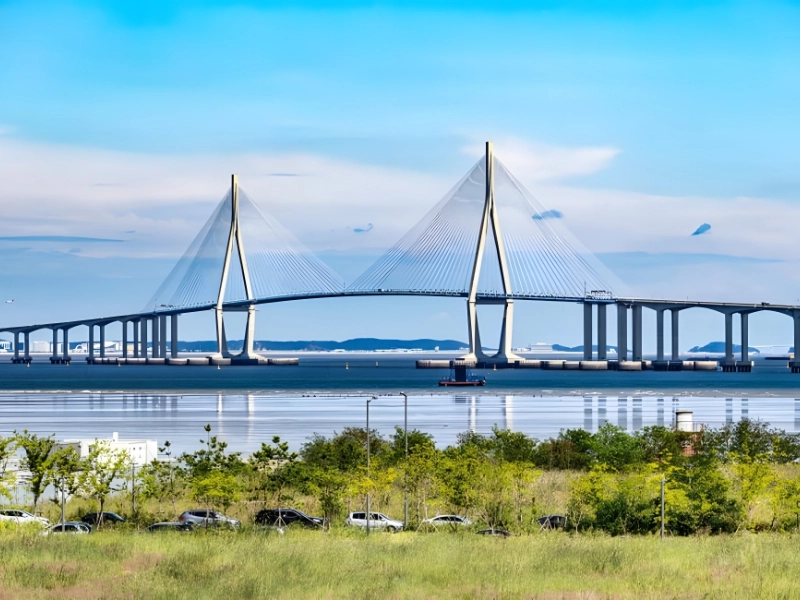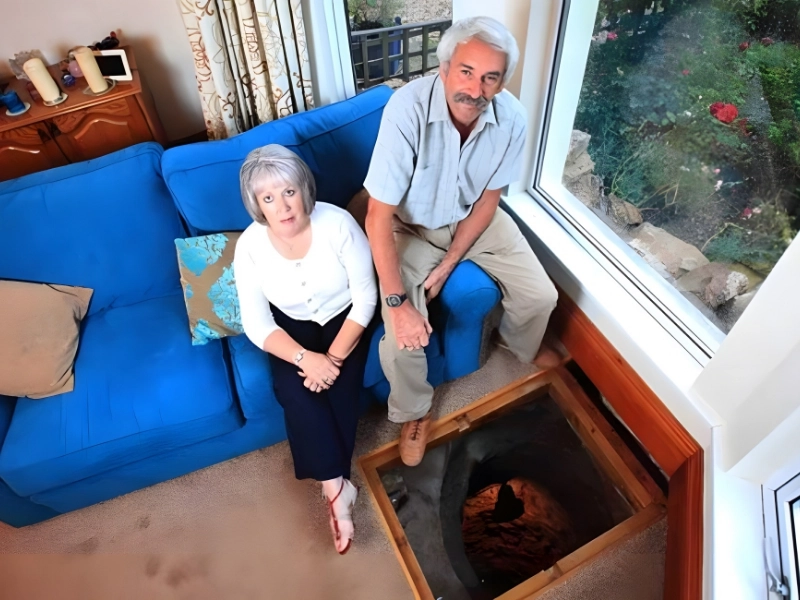6. Bridge at Incheon, South Korea
Situated in Incheon, Korea
Founded in 2009
Price: *$1.4 billion
Incheon, South Korea, is the place that inspired the name of the bridge. Being the longest cable bridge in South Korea, the reinforced concrete, cable-stayed bridge has this distinction. As of 2019, it is the tenth-largest cable-stayed bridge globally.

Advertisement
South Korea's Incheon Bridge ©DreamArchitect/SShutterstock
Weary visitors will no doubt appreciate the hour-long travel time between Songdo International Airport and Incheon International Airport, which is connected by the Incheon Bridge, which was developed and constructed by Apple rival Samsung. It is situated to the south of Yeongjong Bridge, another well-known route.
It was the first bridge that linked Yeongjong Island to the mainland. The Incheon Bridge Corporation, a private company, finances the other portion of the bridge with funds provided by the government. The Korean Expressway Corporation and the MLTM handled the project as a whole with skill.
7. Bridge over Øresund, Sweden/Denmark
Situated in Copenhagen, Denmark, and Malmo, Sweden
Founded in 1995
Price: *$3.2 billion
The Øresund Bridge spans the Oresund Strait and connects Sweden and Denmark. It is approximately five miles long. Beginning at the Swedish coast, the Øresund Bridge finishes at the man-made island of Peberholm in the center of the strait. The 2.5-mile Drogden Tunnel, which links Peberholm with the Danish island of Amager, marks the end of the passage. When designing the Øresund, COWI didn't cut any corners. The bridge came with a price tag of 19.6 billion DKK, or $3.2 billion.

Sweden/Denmark's Øresund Bridge ©Ingus Kruklitis/SShutterstock
The Øresund started proposing it in 1910, but WWII ultimately caused the project to be shelved. In 1995, the bridge's construction received the formal go-ahead, and it opened in 2000. The discovery of sixteen unexexploded WWII bombs on the ocean floor in the 1990s caused a significant delay in the project's timeline (although it's unknown if the bombs were produced by American corporations like Ford or Mattatuck or by German forces).
The Omega Center states that there were multiple reasons to complete this bridge as soon as possible, but even the best-laid intentions might backfire due to undetonated WWII explosives. These included the development of Oresund as a regional hub, better transportation from Hamburg to Oslo, and bolstering the finances of the region's biggest cities, which were struggling financially at the time.
Advertisement










